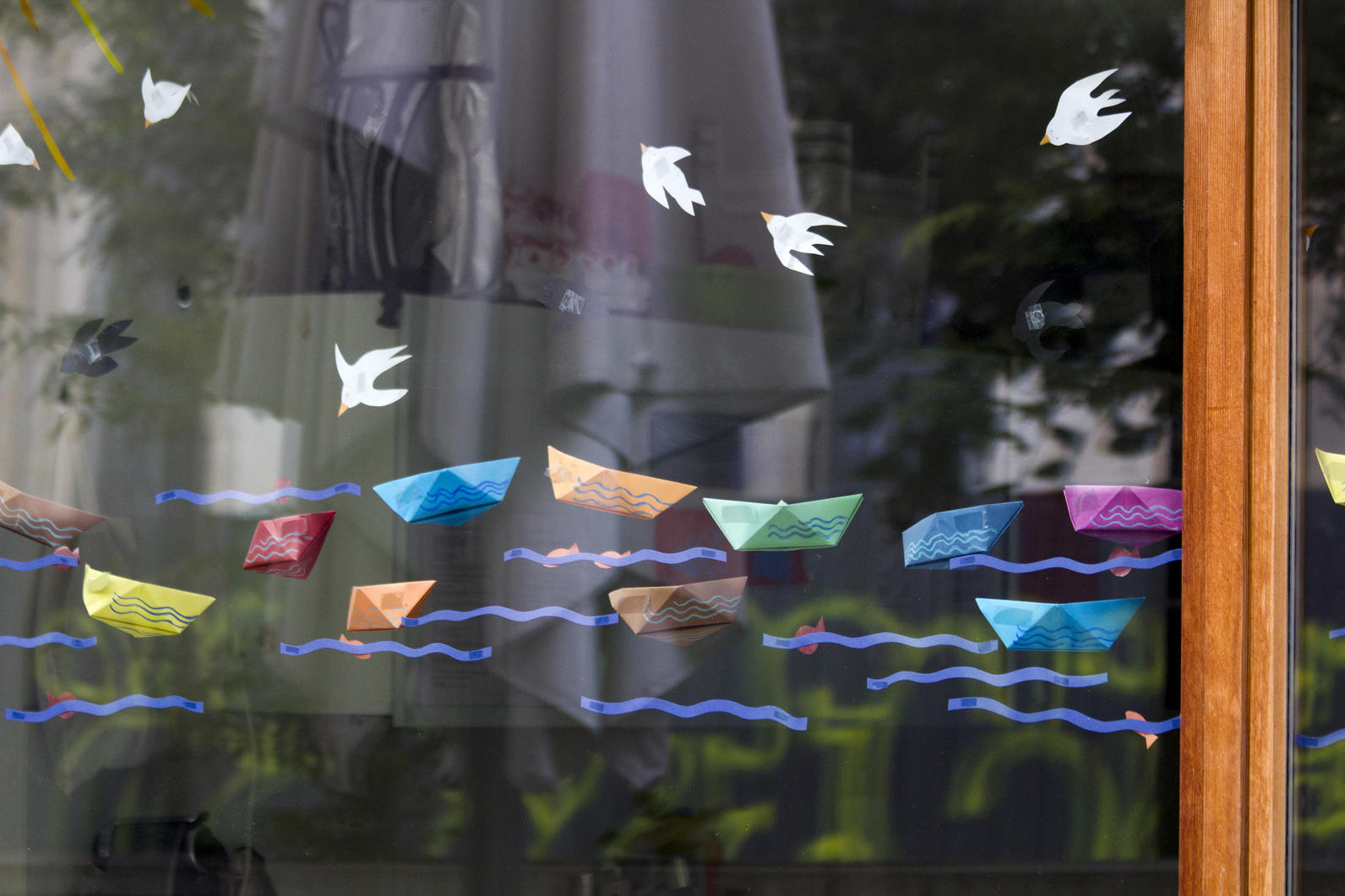Tips to help you prevent your confused feathered friends from meeting an untimely demise at your window.
Ah, fall! Leaves are changing, temperatures are dropping, and birds are headed south to warmer climates. This means that these birds are traveling through unfamiliar territory - unfamiliar territory that may include your backyard. For birds, glass windows are worse than invisible because they reflect nearby foliage and the sky. According to one study, this results in up to one billion bird deaths each year by striking windows in the U.S.
But don't despair! There are a few things you can do to migration-proof your windows to protect your feathered friends from the danger of clear glass. Some of these tips you can place on the inside of your window, but it is recommended that you place the visual deterrents on the outside of the window for maximum effectiveness.
Be sure that anything you place on your windows are spaced close enough that birds won’t try to fly “through” the gaps and straight into your window. This means horizontal gaps should be no wider than 4” and vertical gaps should be no wider than 1-2”.
1. Tape strips or dots
Attach strips of chart tape on the outside of a window, either 1/4" wide vertical white strips, spaced 4" apart, or 1/8" wide vertical black strips, spaced 1" apart. The American Bird Conservancy sells BirdTape that is translucent, easy to apply, easy to remove, and lasts up to 4 years on the outside of a window. Alternatively, you can use adhesive dot stickers spaced in a grid pattern for an unobtrusive deterrent.
2. Window decals
Place window decals, like these WindowAlert decals that contain a component which reflects ultraviolet light – invisible to us mere humans but a bright beacon to birds – on your windows to deter birds and decorate your windows with fun, small images. For a low-cost option, make your own window decals!

3. Hanging decorations in front of the glass
Hang decorations in front of your windows to deter birds. These can be shiny and reflective, like CDs, aluminum pie pans, tin foil, or Christmas decorations, or something that flutters in the wind like strips from a plastic bag. The birds will see the movement from the dangling decorations and translate that to “stay away!” Another cool take on this idea is something called the FeatherGuard, which is loose feathers strung together with fishing line. Make your own FeatherGuard with craft feathers and fishing line!
4. Tempera paint
Apply tempera paint, found at many craft stores, with a brush or sponge. Tempera is nontoxic and long-lasting but is easily removed with a damp cloth or sponge. Use a pattern (dots or stripes) with horizontal gaps no wider than 4” and vertical gaps no wider than 1” or get creative and paint your own designs!
5. Mosquito screens
Install mosquito screens outside of your windows that serve the dual purpose of deterring both our feathered friends and our (unofficial) state bird. Be sure that they cover the entire surface of the window for maximum effectiveness.
6. Netting
Cover the glass on the outside of the window with netting at least 3” from the glass and taut enough that birds bounce off the netting before they bounce off the window. Smaller mesh is best (around 5/8”) so the birds don’t become entangled once they hit the netting. Mount the netting on a frame, like a storm-window frame, for easy installation and removal.
7. Move your bird feeders
This is a two-fold suggestion: either move your bird feeder closer to the glass or farther away from the glass. Birds that feed on feeders that are more than 3 feet away from the glass, but less than 30 feet, are more likely to impact windows. If you move your feeder less than 3 feet away from your window, birds that fly off the feeder won’t be able to gain enough momentum to harm themselves when they fly into glass. Alternatively, move your feeders far enough away from the windows in the first place (more than 30 feet away) so that impacting glass after leaving a feeder is much less likely.
Do you have a tried and true method you use to keep bird collisions to a minimum? Share it with us at audubonalaska@audubon.org or on our Facebook page.
Note: No window products, including those described in this blog, completely guarantee protection from window collisions. Results may vary, but any visual deterrents are better than none.



